Wild boar are native throughout Northern and Central Europe. These impressive creatures can be quite destructive. While hiking with a friend who lives in Alsace, France, I was shown small huts set on stilts so hunters could see and shoot boar foraging in the middle of the tall crop fields. Several months ago, I was taken to vineyards in Ticino (the Italian-speaking region in Switzerland) and shown the massive destruction caused overnight by the wild boar. So devastating is their foraging that some villages have designated hunters to shoot them and bring the meat to butchers who then make ragout, stew and sausage out of the meat.
I heard about Konrad Fuhrer, a Swiss hunter from the tiny village of Courlevon in Canton Fribourg about 25 kilometers from Bern. I was told he hunts for, prepares and then cooks wild boar for parties and festivals. After securing an introduction, I spent a day watching him at work.
Mr. Fuhrer told me Switzerland restricts wild boar hunting to four months beginning around the middle of September. In season, Mr. Fuhrer hunts in Canton Fribourg. The rest of the year, he crosses the border to France where the hunting season is not limited. Hunters cannot shoot pregnant females and many won’t hunt for the males during mating season because apparently the meat absolutely stinks.
Once a boar is killed it must be gutted on-site. Mr. Fuhrer takes it home before removing the head, hooves and skin. He then rubs the entire body with a (secret) spice mixture that tastes a lot like a Southwest Louisiana rub to me. Full of white and red pepper. The boar is wrapped in plastic and left in an ample-sized refrigerator allowing time for the flavors to infuse.
Come festival morning, he showed up on-site and began setting up the rotisserie. First out of the truck was a large contraption of thick metal screening about 1 1/2 meters (5 feet) high, 1/2 meter (1 1/2 feet) in depth and the length of a wild boar. He filled it completely with coal then set up a rotisserie in front with a drip pan underneath to catch the juices. Then he whipped out a massive blow torch to light the coals.
Next out of the truck was the plastic wrapped, marinating wild boar.
It took two men to carry it to the table for unwrapping.
Once unwrapped, metal clamps are attached.
The boar is carried over and attached to the battery-operated rotisserie.
Now begins the 8 hour-long roasting on the rotisserie.
The torso is wrapped in foil once the skin has nicely browned and crisped to prevent burning.
Melted fat and juices infused with the spice rub drip into the pan under the roasting boar. This is used to baste the meat with the excess made into gravy.
When the boar is cooked through, the foil wrapping is removed for the final browning.
The rotisserie is turned off and unbolted then carried to the carving table where the clamps are removed.
Then the carving begins.
Mr. Fuhrer told me the boar he hunts average around 45 kilo (100 pounds) but only yield about 15 kilo (33 pounds) of meat that serves, along with a side dish of fries or potato salad, 50 to 55 people. The surprisingly low yield, given the size of the boar, is explained by the huge size of the boar’s head relative to its body.
I bought my ticket, stood in line, and was lucky enough to get a rib and some tenderloin. I was expecting it to be gamey-tasting and a bit tough, but it was moist, melt-off-the-bone tender, juicy and just delicious.
In no small part because each serving was topped with the flavor-infused gravy made from the drippings.
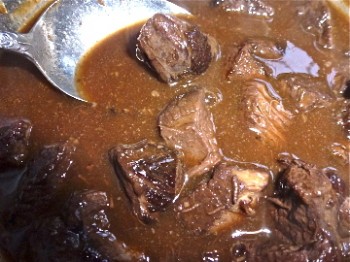
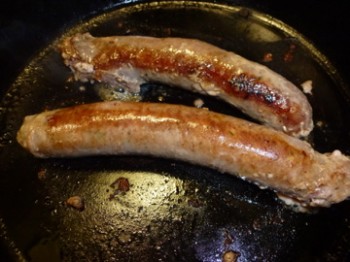
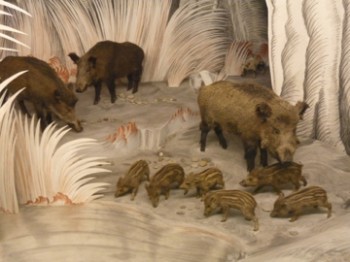

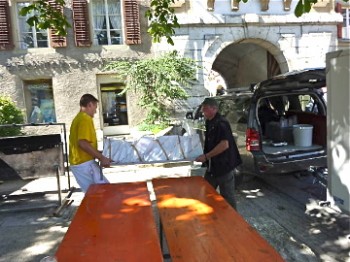
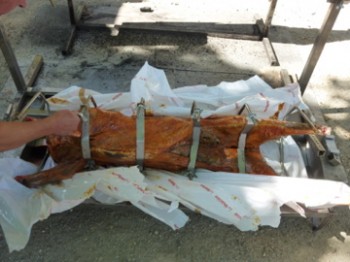

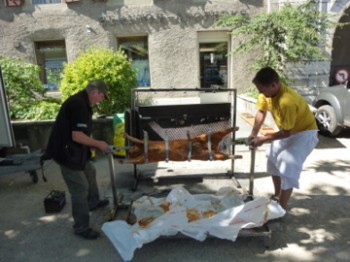
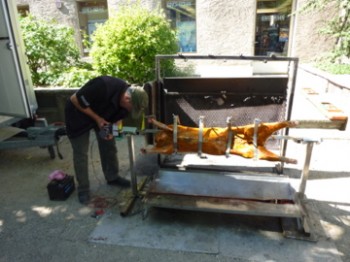
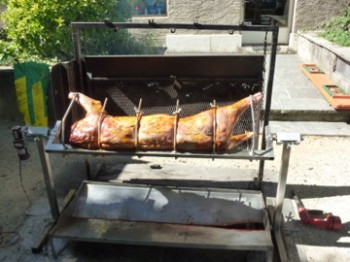
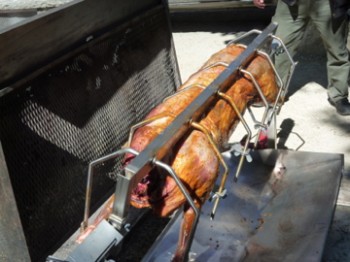

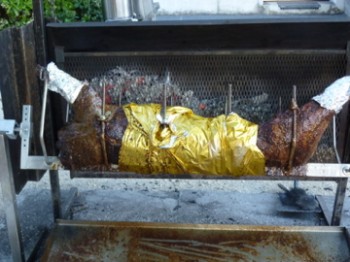

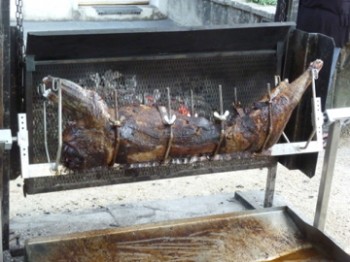


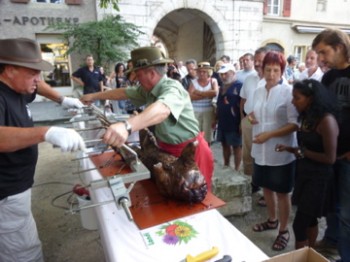
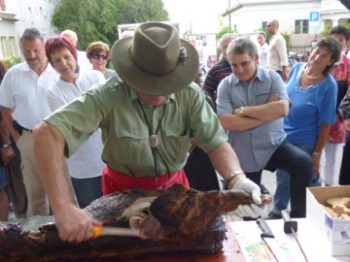

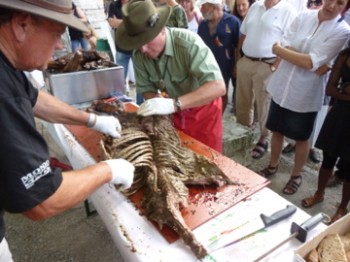

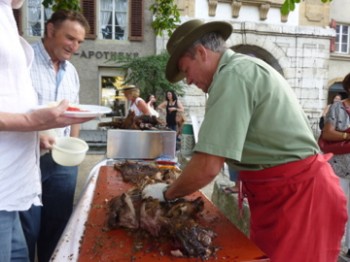
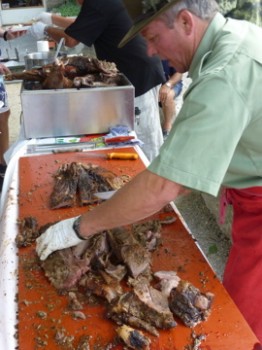
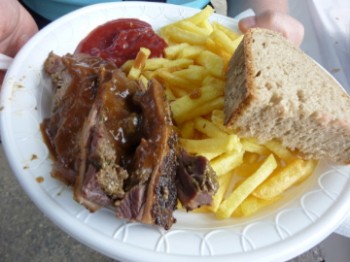
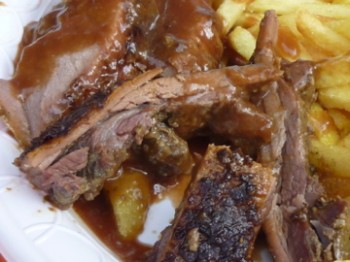





Speak Your Mind